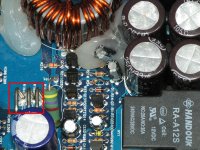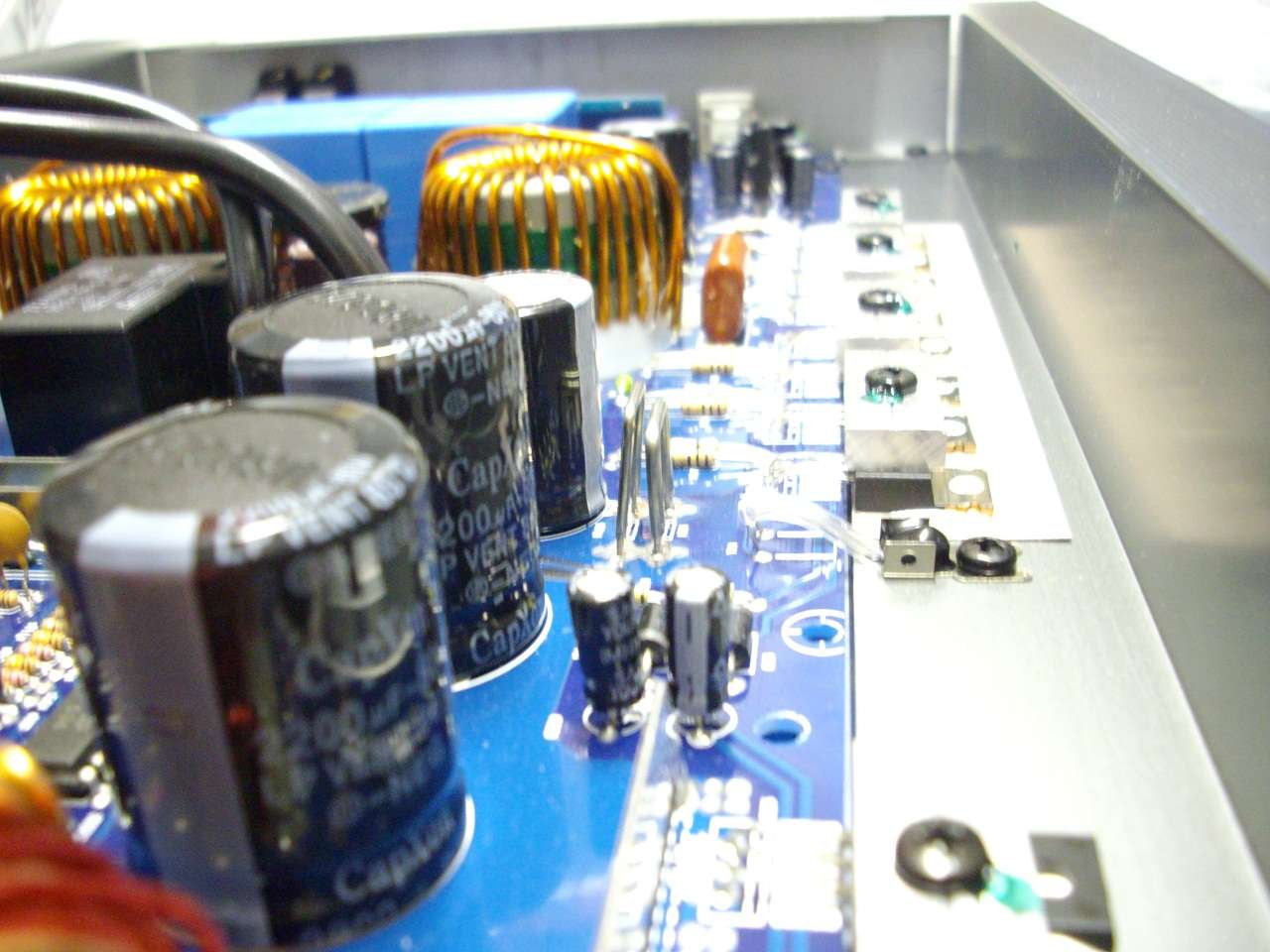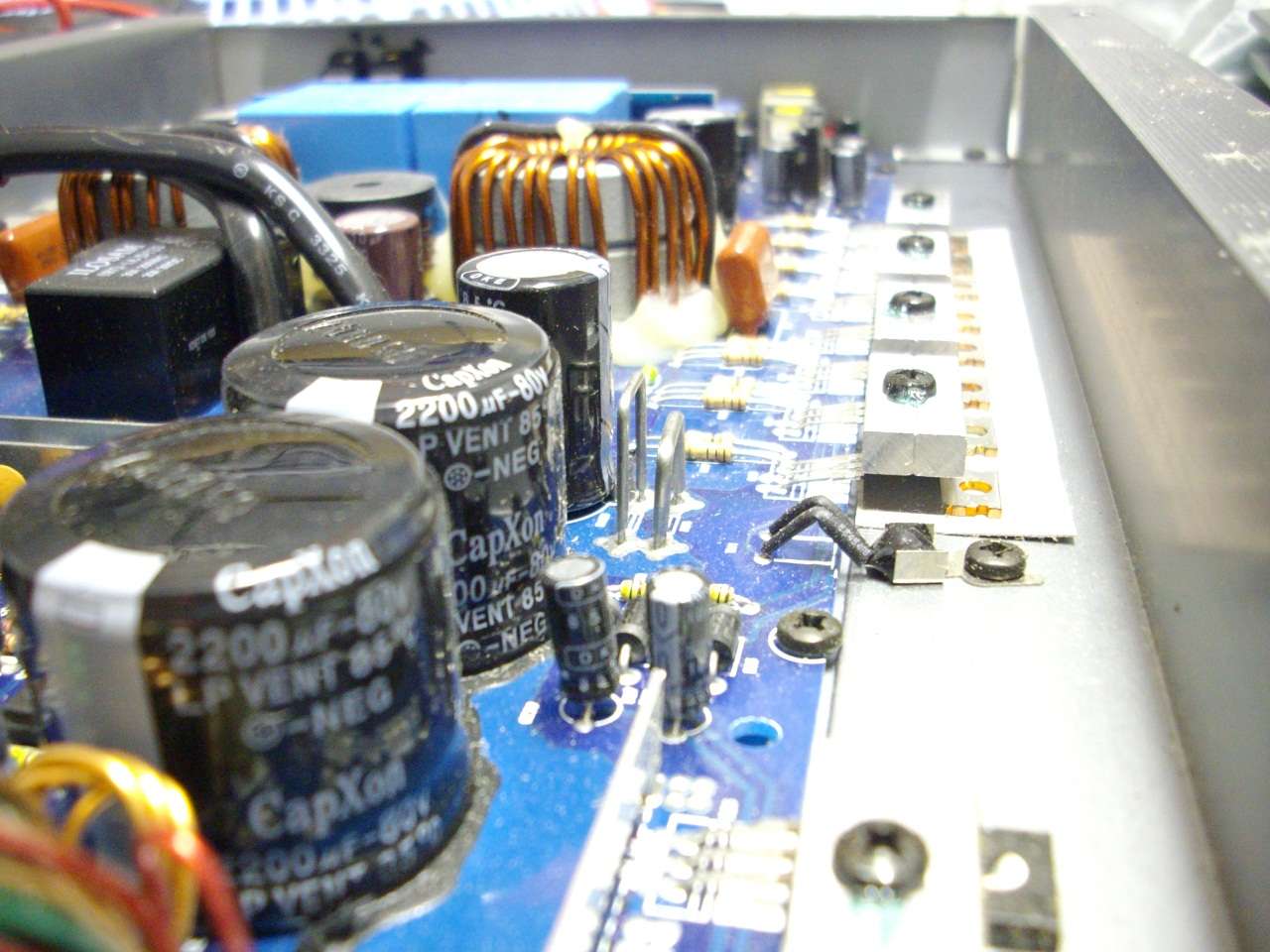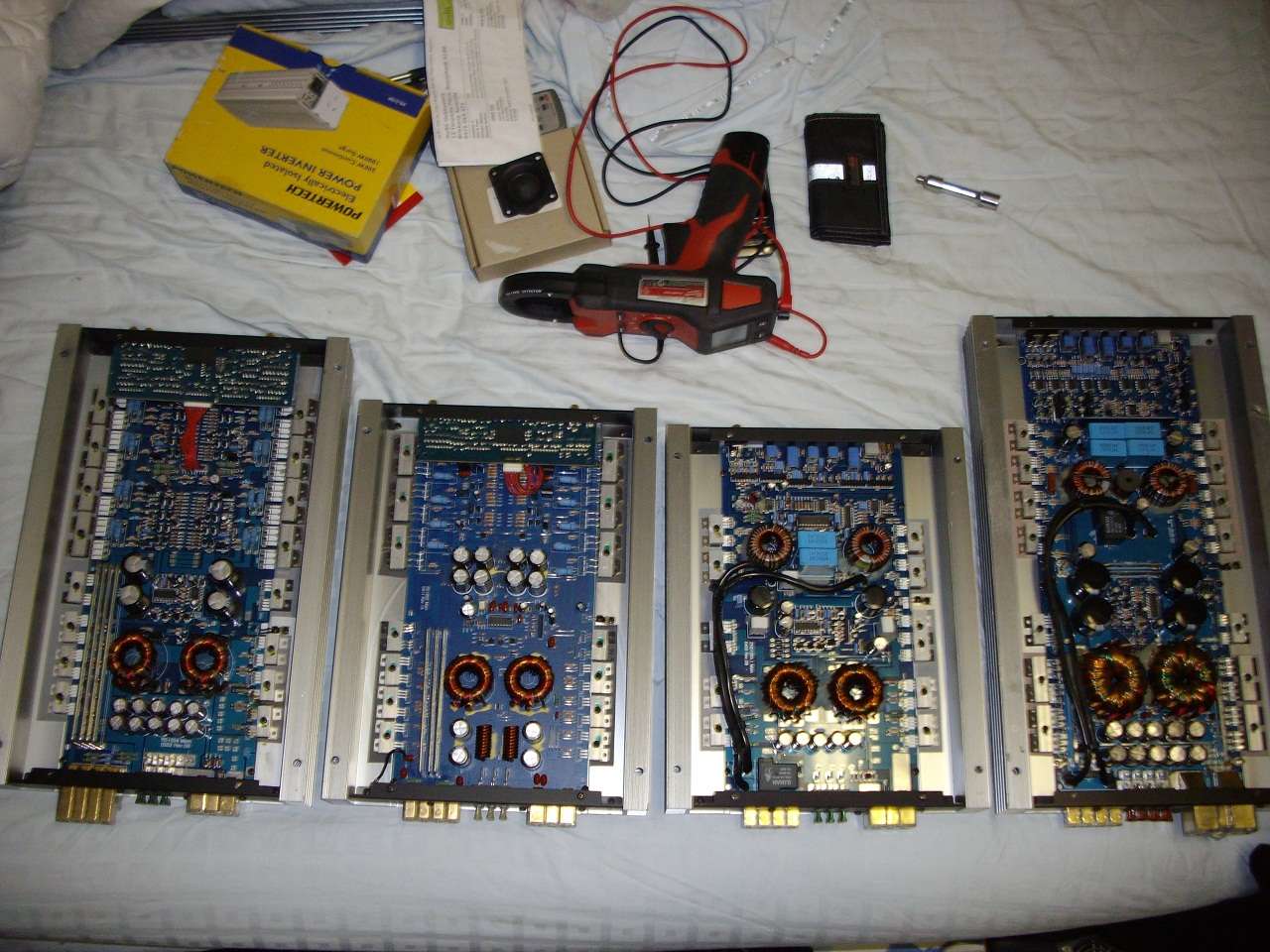Does anyone have any info on these amps?
They all use the same board, and I have a ReSponse branded amplifier here, that also uses the same board.
I've used two of these amps in the past at 0.5ohm daily, no issues, never went into protect, no matter how much abuse I gave them. Even blew all the fuses in one.
Nevertheless! I've recently bought two second hand, brand new, never used, amps, and they don't like 0.5ohm at all... and thats what I bought them to run at!
SO, I'm hoping to modify the protection circuit to make it less sensitive, a schematic would be excellent, or even just a little info.
Thanks for any input!
They all use the same board, and I have a ReSponse branded amplifier here, that also uses the same board.
I've used two of these amps in the past at 0.5ohm daily, no issues, never went into protect, no matter how much abuse I gave them. Even blew all the fuses in one.
Nevertheless! I've recently bought two second hand, brand new, never used, amps, and they don't like 0.5ohm at all... and thats what I bought them to run at!
SO, I'm hoping to modify the protection circuit to make it less sensitive, a schematic would be excellent, or even just a little info.
Thanks for any input!
I agree but if you can't use the amp like it's supposed to be used, find the 8 pin op-amp that has pin 4 connected to the negative rail. There will be a voltage divider across the shunt resistor. That voltage divider feeds the inputs of the 8 pin op-amp. Compare the resistors of that divider in the old and new amps. If they're the same, compare the voltage on the reference terminal. The reference terminal will be the input to the op-amp that has more voltage than the other input terminal. Measure the voltage with the black probe on the negative rail. The reference voltage will be very low (less than 0.2v, likely) so measure carefully.
it only has 8 pin opamps.
http://www.diyaudio.com/forums/car-audio/176660-sundown-saz-3000-d-2.html
is this the opamp I'm meant to be looking for? that section of the circuit is the same (or very similar) between the 1500, and 3000watt amps.
http://www.diyaudio.com/forums/car-audio/176660-sundown-saz-3000-d-2.html
is this the opamp I'm meant to be looking for? that section of the circuit is the same (or very similar) between the 1500, and 3000watt amps.
The shunts are different sizes....
the amps that go into protect more have higher shunts... so they're longer, while being the same thickness... meaning more resistance, greater voltage drop, and therefore, go into protect more easily?
Which explains why I can't find any differences between the two amps component values...
the amps that go into protect more have higher shunts... so they're longer, while being the same thickness... meaning more resistance, greater voltage drop, and therefore, go into protect more easily?
Which explains why I can't find any differences between the two amps component values...
You're likely right about the increased resistance. If you can find the op-amp (may be a comparator, not an actual op-amp), you should be able to work out the values or install a pot to make it just barely hold on the 0.5 ohm load (so a slight overload would allow the amp to go into protect).
You're likely right about the increased resistance. If you can find the op-amp (may be a comparator, not an actual op-amp), you should be able to work out the values or install a pot to make it just barely hold on the 0.5 ohm load (so a slight overload would allow the amp to go into protect).
did you see my last post on the previous page?
I'm not familiar with that amp and the photo was so bad that I couldn't tell anything from it.
The circuit is likely (again, I have no information on this amp) a simple voltage comparator. There is a reference voltage on one input of the op-amp/comparator and a voltage produced across the shunt resistors on the other input of the op-amp. When the input from the shunt resistors exceeds the reference voltage, the amp shuts down.
The circuit is likely (again, I have no information on this amp) a simple voltage comparator. There is a reference voltage on one input of the op-amp/comparator and a voltage produced across the shunt resistors on the other input of the op-amp. When the input from the shunt resistors exceeds the reference voltage, the amp shuts down.
- Status
- This old topic is closed. If you want to reopen this topic, contact a moderator using the "Report Post" button.
- Home
- General Interest
- Car Audio
- Schematic? Sundown SAZ-1500, Elevation Audio DX1500.1, RD 1750.1, Atomic AT-1600.1D



